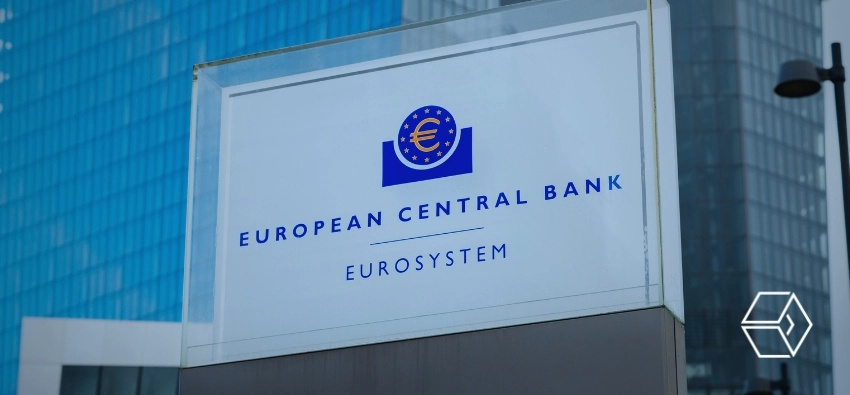
- Stablecoin oversight gains urgency after the European Central Bank risk warning.
- Rapid stablecoin growth raises systemic regulatory concerns in Europe.
- Oversight debates intensify amid calls from MiCA for stronger safeguards.
A senior European Central Bank official has warned that the eurozone could face disruptions to monetary policy if a major redemption wave sweeps through the stablecoin market. The Dutch central bank governor and ECB policymaker, Olaf Sleijpen, said a disorderly run could force the ECB to adjust its interest rate trajectory.
Stablecoin Oversight Tightens in Europe (Source: X)
Sleijpen drew attention to the rapid expansion of U.S. dollar-pegged stablecoins, which have risen 48% this year to more than $300 billion in circulation. A large portion of these reserves sits in short-duration U.S. Treasuries. This means a sharp redemption event would require issuers to liquidate government-bond holdings at speed.
According to Sleijpen, such a scenario could send volatility through fixed-income markets. He believes it would also strain liquidity across interconnected financial systems. His remarks underscore how stablecoin oversight is becoming a critical component of the eurozone’s evolving digital-finance framework.
The warning aligns with broader conversations among regulators about the adequacy of current stablecoin oversight safeguards. Sleijpen emphasized that large redemption cycles could push issuers to unwind U.S. Treasury positions on a scale that affects global funding markets, given the speed at which digital tokens can be redeemed for fiat currency.
MiCA Provides Key Safeguards on Stablecoins, but Oversight Questions Remain
In response to rising concerns, the European Banking Authority has noted that the EU’s Markets in Crypto-Assets Regulation (MiCA) already includes several protections relevant to stablecoin oversight. These oversights include liquidity rules, reporting obligations, and reserve-asset standards.
Speaking to Reuters, the EBA said the scale of potential risk depends on each issuer’s business model, redemption structure, and jurisdictional footprint. Regulators inside the bloc have urged policymakers to address the so-called “multi-issuance” model, in which firms treat tokens issued in the EU as interchangeable with those minted abroad.
The European Systemic Risk Board, chaired by ECB President Christine Lagarde, warned that this operational approach could amplify the speed and severity of a run. This is especially true if non-EU holders rushed to redeem EU-issued versions first.
EBA: Major Stablecoins Present the Bigger Risk
While MiCA already restricts some issuance practices, national regulators and the EBA are seeking clarification from the European Commission on whether multi-issuance remains permissible under the framework. Officials estimate that the tokens most likely to present systemic challenges are those backed by large pools of dollar-based reserves.
This is because of their size and their use of U.S. Treasury instruments. Regarding liquidity, the EBA provided that the issuers of stablecoins should have sufficient high-quality liquid assets that could be used to address redemption should there be a need in any country worldwide.
The USDC of Circle, the biggest EU-regulated multi-issuance-based stablecoin, has approximately $75 billion in tokens outstanding. Despite having no EU license, Tether is the global issuer of the leading volume and leads to broader cross-jurisdictional issues.
Policy Options Under Consideration If Stability Risks Intensify
According to Sleijpen, in case the instability of stablecoins becomes an obstacle to the implementation of monetary policy by the ECB, the use of extra tools may be necessary for the policy-makers. These include modified interest rate policies, increased liquidity facilities, or changed collateral schemes.
Although such actions would be unprecedented in response to digital-asset volatility, officials stressed the importance of preserving price stability and maintaining core funding channels. His remarks echo ongoing warnings in publications from the ECB and the Bank for International Settlements.
Both have advocated proactive stablecoin oversight before risks accumulate. Cross-border redemption flows, concentration of reserves in U.S. assets, and the speed at which digital tokens can be transferred remain central to discussions.
Central bankers have also encouraged greater coordination around euro-denominated stablecoin development. Several officials argue that providing regulated, euro-based token options could reduce the bloc’s reliance on foreign stablecoins and strengthen monetary-policy autonomy.
Sleijpen’s warning reinforces that stablecoin oversight is no longer viewed solely through the lens of crypto-market protection. Instead, it is now embedded in discussions on financial-system integrity, bond-market resilience, and the long-term stability of the eurozone’s monetary framework.












